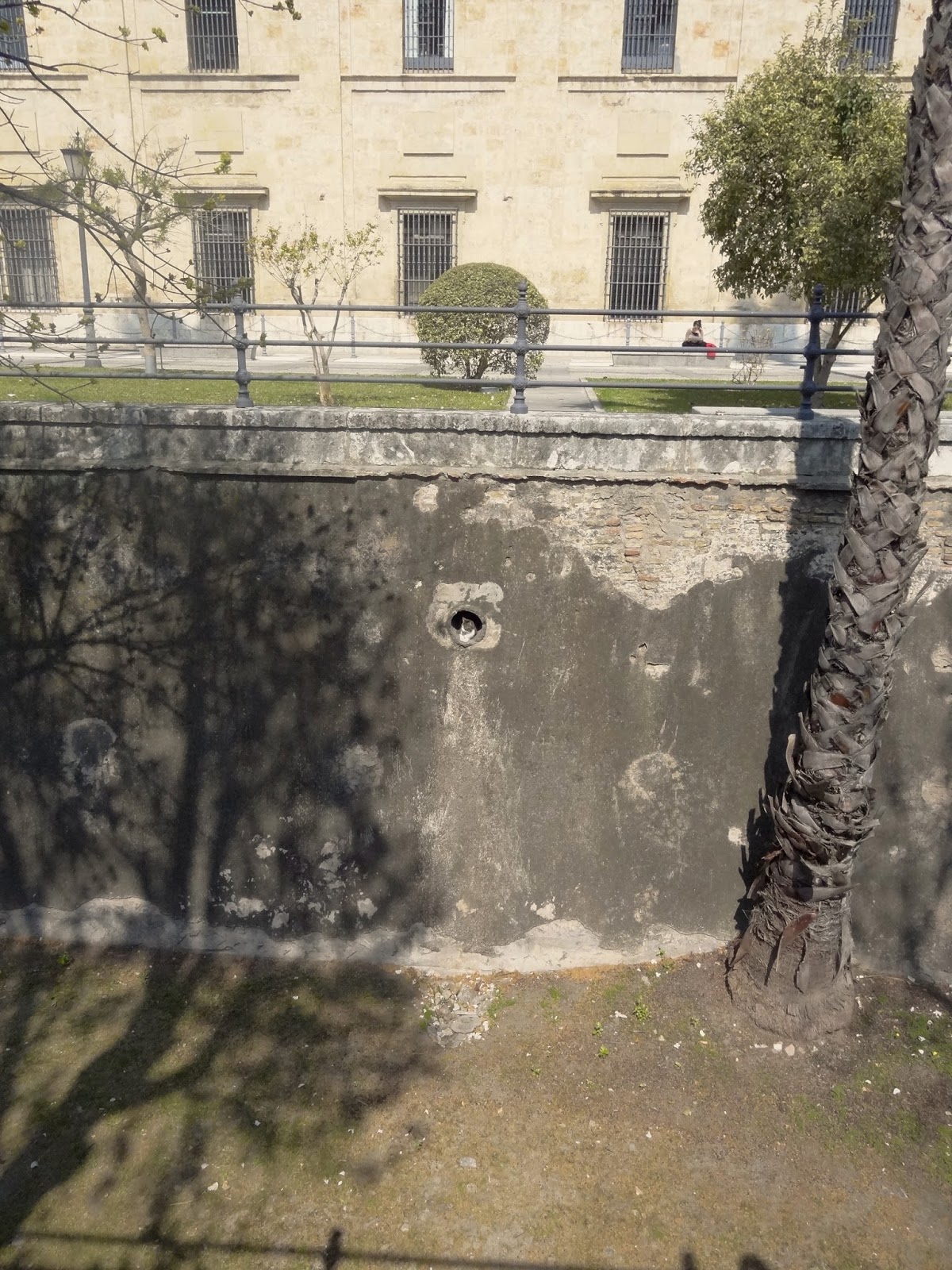I'm in Andalusia, Spain now, soaking in some much-needed sun and discovering the joys of
salmorejo. It's a delicious local version of gazpacho, the color of a Creamsicle and blended smooth and thick as a good milkshake. This dish is savory, though, made with very ripe tomatoes, bread, extra-virgin olive oil, Jerez sherry vinegar, and garlic.
Originally from Cordoba,
salmorejo appears on menus across Andalusia. I've loved each version of this cold, refreshing soup that I've tried. At one charming patio restaurant in the old Jewish quarter of Seville, our waitress came by to sprinkle the top of our
salmorejo with chopped onions, tomatoes and red peppers.
The
San Fernando restaurant at the Hotel Alfonso XIII in Seville makes this classic version, which comes topped with hard boiled egg, the yolks and whites separated into neat opposing quadrants, along with chopped tomatoes and black olives. Finishing the dish are shards of crispy cured and dried Iberico ham.
San Fernando sommelier Gregory Bossuyt notes that sometimes
salmorejo comes topped with pieces of dried tuna instead of ham, or for vegetarians, with diced red and yellow peppers and cucumber.
 |
At the Marbella Club Hotel in Marbella, the salmorejo was
lighter in texture and heavier on the vinegar. |
 |
Chef Jorge Manfredi's take on the salmorejo
at DMercao, Seville. |
The most adventurous and unusual
salmorejo that I tried was at the tapas restaurant
DMercao, where Chef
Jorge Manfredi liberally mixes Japanese techniques and ingredients with classic Andalusian products. The first course of a highly inventive tasting menu we tried was a orange
salmorejo, garnished with an umami-bomb of a tuna confit cigarillo.
Manfredi says that this dish is a version of a
salmorejo that won him third place in the
Jornadas Gastronomicas de la Naranja, a competition that began as a way to encourage local chefs to use the ubiquitous bitter Seville orange that now hang heavy on trees throughout the city. Most of them end up as exports to England, where they will be boiled into submission and turned into the Seville orange marmalade so beloved there.
His prize-winning orange
salmorejo, Manfredi, says, was made with the juice of the Seville orange and topped with flaked bacalao (dried salt cod) and frizzled leeks.
Chef Manfredi was kind enough to share his recipe for the salmorejo he made for us. If you make it at home, try pairing it, as Manfredi does, with a pale and delicate Manzanilla sherry. You'll have the makings of your own Andalusian experience.
Orange Salmorejo with Tuna Kikkoman
For the salmorejo:
1 liter fresh-squeezed orange juice
300 grams of white bread
1 clove garlic
a bit of water
Salt and sugar to taste
For the Tuna Confit Kikkoman:
130 grams fresh tuna, vacuum sealed cooked at 140 degrees fahrenheit for 30 minutes
Store-bought spring roll or won ton wrapper
Carrot
Leek
Kikkoman soy sauce
1 egg, beaten
Preparation:
For the salmorejo: combine all ingredients in a blender for six minutes. Strain and refrigerate. It should be fluffy and soft on the palate.
For the tuna: Finely chop the leek and carrot. In a bowl mix the tuna, carrot and leek. Season with soy sauce to taste. Fill and roll the won ton wrapper with tuna and roll into a baton shape. Seal with a little beaten egg. Fry in 338-degree fahrenheit oil.
To finish:
Fill a cocktail glass with orange salmorejo and garnish with the Kikkoman baton.













